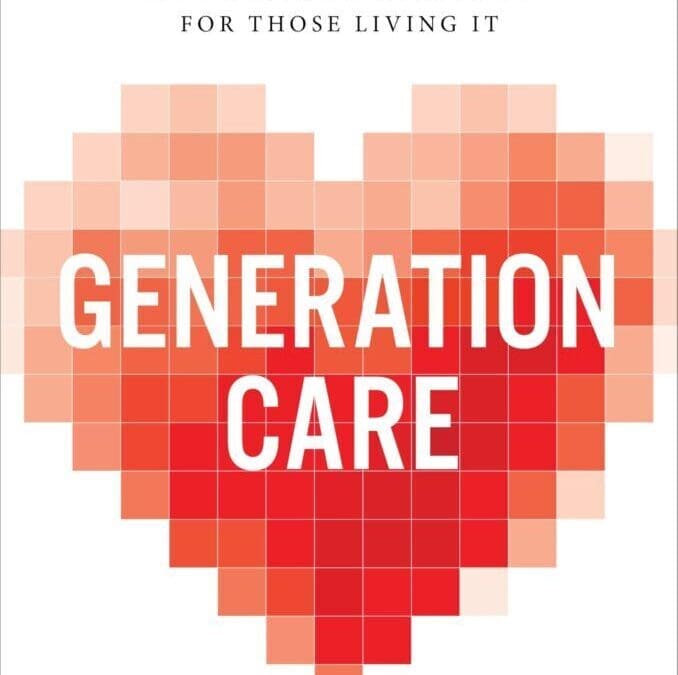
Nice Girls Don’t Talk Trash: The Double Standards Still Holding Back Women in Sports
April 11, 2025
Judge rules Mahmoud Khalil can be deported
April 11, 2025Millennials and Gen Z are the new caregivers—and they’re doing it alone.
The following is an excerpt from Generation Care: The New Culture of Caregiving, published April 8.
Lizzie, a 34-year-old mom who cares for her husband with long COVID, is emblematic of how the classic sandwich generation has evolved for our generation into the multigenerational caregiver—caring for multiple family members of, you guessed it, different generations; in Lizzie’s case, her husband and children. Since COVID, in particular, the age of multigenerational caregivers has become younger as more of us take on care of an affected spouse (or sibling).
When her husband contracted long COVID, Lizzie’s world was turned upside down and hasn’t recovered. She wrestles with the idea of considering herself a single parent to their two small children, but that’s how she feels. While he is on medical leave from his job, Lizzie has continued working while raising their kids; because her husband has a hard time focusing, is unable to read, and has extreme fatigue, she has taken the reins on his medical care and treatment. She keeps a binder to catalog his symptoms, treatments they’ve attempted, and the results.
After months of trying, he was finally accepted to one of the few long COVID treatment programs in the country. Even with this large hurdle accomplished, Lizzie is daunted by the prospect that his illness, and their current family situation, is indefinite. She told me that she only allows herself to plan ahead one year at a time, mostly to make sure that childcare is covered for any upcoming work trips or weddings.
Her reluctance to think too far into the future is understandable: There are major financial and emotional implications for members of our generation providing care for decades. Not only is more out-of-pocket cash going toward the person’s care for longer, but Lizzie also has to contend with the cost of childcare: With her husband no longer able to share kid-watching duties, Lizzie needs someone from the outside to help, and family isn’t always available. Your partner’s income contribution or health benefits may also be in jeopardy if they are no longer employed full-time or at all. The added pressure around money creates additional stress for a young (or younger) partnership that is already dealing with a lot.
When Lizzie’s husband first developed COVID and his symptoms were milder, he was able to continue working. Lizzie, meanwhile, took on being a full-time parent—while also working her actual full-time job remotely from home. The couple expected his condition to improve as a normal case would; instead, in subsequent weeks and months, his health worsened.
Her reluctance to think too far into the future is understandable: There are major financial and emotional implications for members of our generation providing care for decades.
In the beginning, he could handle his own medical care. Eventually, as symptoms progressed and he was granted medical leave from his job, even calling doctors became difficult for him … and, as people with chronic illness in the United States know, when dealing with doctors and insurance companies, a lot of calls need to be made to get anywhere.
“He couldn’t do it. You’d have to get on hold and wait forever to talk to someone to schedule an appointment and if you are (a) depressed and (b) don’t feel well, you don’t have the time for that.”
Lizzie took on scheduling and escorting him to doctor appointments, has access to his medical chart and takes notes in medical appointments. She keeps a spreadsheet to track symptoms and treatments they’ve tried and records the results. Within the household, she noticed lapses in bill payments he was responsible for so transitioned household contracts to her name so that she could handle the family’s financial management herself.
I still rely on my mom for a lot of help to be my support person. So the day that I might have to be in charge of her care is just currently terrifying.
Lizzie
Crunched in the middle of child-rearing and being caregiver to her husband, Lizzie isn’t quite the sandwich generation we grew up hearing about—simultaneously caring for small kids and elderly parents. Instead, Lizzie is a multigenerational caregiver. Although there are many possible combinations, multigenerational caregiving can include raising kids while also providing care for a partner, a sibling, a close friend … or, yes, an ailing senior family member.
Or maybe children aren’t part of the equation, and you’re caring for two adults of different generations, such as a spouse and a parent. This phenomenon isn’t new, but it is a trend that’s on the rise—particularly in our generation. Just over half of multigenerational caregivers with a child at home under the age of 18 are between the ages of 30 and 44 years. (Another 15 percent are 18 to 29.) In other words, the majority of people who are raising a dependent child while also providing care to another family member (of any age) are millennials or Gen Z.
Caring for her husband and lacking his physical support have put pressure on Lizzie to be more available to her children. She relies on her 70-year-old mom to fill in where she struggles; Lizzie doesn’t know how she would manage without her mother’s help.
“She will come over and help with the kids almost any time I ask, she’s my backup. I’m terrified for the day that that changes because I still rely on my mom for a lot of help to be my support person. So the day that I might have to be in charge of her care is just currently terrifying.”
Great Job Jennifer Levin & the Team @ Ms. Magazine Source link for sharing this story.







